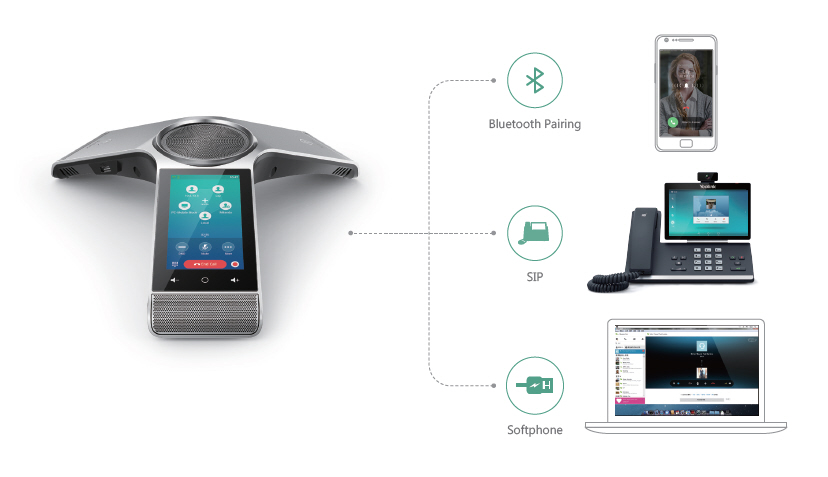Introduction
In today’s fast-paced digital world, businesses are constantly on the lookout for solutions that enhance communication and improve operational efficiency. Among the most pivotal technologies in this domain are Voice over Internet Protocol (VoIP) and Private Branch Exchange (PBX) systems. While both solutions serve the primary purpose of facilitating voice communications, they diverge significantly in terms of functionality, cost, and—most importantly—voice quality.
But what really sets VoIP apart from traditional PBX systems when it comes to voice quality? This article will provide an in-depth analysis of these two technologies, focusing on their respective advantages and disadvantages, and ultimately helping you decide which is the best fit for your business needs.
What is VoIP?
Understanding VoIP Phone Systems
Voice over Internet Protocol (VoIP) refers to a technology that allows people to make voice calls using the internet instead of traditional telephone lines. By converting sound into digital packets and transmitting them over the web, VoIP phone systems deliver a cost-effective and flexible method for managing calls.

How Do VoIP Phone Systems Work?
When you use a VoIP phone system, your voice is digitized and sent through the internet as data packets. These packets travel along various routes before reaching the recipient’s device, which then converts them back into sound waves. This process allows for quicker communication without relying on physical wires or circuits.
Advantages of Using VoIP Phone Systems
Cost-Effective: One of the primary benefits of a VoIP phone system is its affordability. Businesses can save substantially on long-distance calls. Flexibility: With a VoIP system, employees can work from anywhere with an internet connection. Scalability: Adding new lines or features to a VoIP system is much easier compared to traditional systems.Disadvantages of Using VoIP Phone Systems
Internet Dependency: If your internet goes down, so does your phone service. Quality Variability: The quality of calls can fluctuate depending on bandwidth availability. Security Risks: VoIP systems can be vulnerable to hacking if not properly secured.What is PBX?
Understanding Private Branch Exchange Systems
Private Branch Exchange (PBX) refers to a private telephone network used within an organization. It allows internal users to communicate with each other while sharing several external phone lines.
How Do PBX Systems Work?
A PBX system connects all internal phones within an organization and manages incoming and outgoing calls through external phone lines. Traditional PBX systems rely on physical hardware located on the premises, while modern variants—including IP-PBX—utilize IP technology.
Advantages of Using PBX Systems
Reliability: Traditional PBX systems offer consistent call quality since they do not rely on an internet connection. Advanced Features: Many PBX systems come loaded with features such as voicemail, call waiting, and call forwarding. Enhanced Security: Being on-premise often means better control over security protocols.Disadvantages of Using PBX Systems
High Initial Costs: Setting up a traditional PBX system can be costly due to hardware expenses. Limited Flexibility: Moving or adding extensions in a traditional setup may require extensive rewiring. Maintenance Issues: Companies must handle maintenance internally or hire external support teams.A Side-by-Side Comparison of Voice Quality: VoIP vs. PBX
When it comes down to comparing voice quality http://spencerrsfv250.iamarrows.com/understanding-the-cost-savings-associated-with-voip-phone-systems between VoIP and PBX systems, there are several factors at play:
| Aspect | VoIP | PBX | |-----------------|------------------------------|------------------------------| | Call Quality | Can vary based on bandwidth | Typically stable | | Latency | May experience delays | Minimal latency | | Reliability | Internet-dependent | Generally reliable | | Sound Clarity | Affected by network issues | High clarity | | Advanced Features | Usually includes extras | Feature-rich |
As noted in this table, one significant advantage of traditional PBX systems lies in their reliability and consistent voice quality under normal operating conditions; however, advancements in technology mean that many modern VoIP solutions now offer comparable—if not superior—voice quality thanks to high-speed internet connections.
Voice Quality Factors in Detail
Bandwidth Requirements for VoIP Calls
Bandwidth plays a crucial role in determining voice quality for any VoIP phone system. Insufficient bandwidth can lead to choppy audio or dropped calls due to packet loss or delays.
What Is Considered Adequate Bandwidth?
For high-quality voice calls using standard codecs like G711 or G729:
- A minimum upload speed of 100 kbps per concurrent call is recommended. For optimal performance during peak hours, allocating at least 1-2 Mbps total bandwidth for multiple simultaneous calls is advisable.
Latency Implications on Voice Communication
Latency refers to the time it takes for data packets to travel from one point to another across a network:
- In general terms: Latency below 150 milliseconds is considered acceptable for good voice quality. Latency above 250 milliseconds may result in noticeable delays that disrupt conversation flow.
How Does Latency Affect Conversations?
High latency can create awkward pauses during conversations as speakers inadvertently talk over each other due to delayed reception of audio cues.
Packet Loss and Its Effect on Quality
Packet loss occurs when data packets traveling across the network fail to reach their destination:
- For high-quality audio: Packet loss should ideally remain below 1%.
What Happens When Packet Loss Occurs?
If packet loss exceeds this threshold, callers may experience distorted audio or sudden dropouts that significantly impact communication effectiveness.

Comparative Analysis Based On Use Cases
Best Use Cases for VoIP Phone Systems
Small Businesses with Remote Employees- Flexible working arrangements benefit greatly from cloud-based solutions like VoIP phone systems.
- The scalability offered by these systems allows organizations to adapt quickly without incurring extra costs during peak times.
- Firms seeking lower operating costs will find considerable savings through affordable long-distance calling plans available via most providers offering VoIP services.
Best Use Cases for PBX Systems
Large Enterprises Requiring Consistent Communication- Enterprises needing robust internal communication often rely heavily upon established infrastructures provided by traditional PBXs.
- For businesses situated where high-speed internet access remains unreliable; maintaining onsite infrastructure ensures uninterrupted service reliability even during outages due lack connectivity options available locally.
- Sectors such as finance may prefer keeping sensitive information within secure premises rather than relying solely upon cloud-based alternatives subject potential vulnerabilities associated public networks hosting third-party applications/platforms delivering shared resources amongst diverse clients/users alike – hence opting towards private exchanges fulfilling regulatory compliance mandates more effectively than alternative methods could offer instead!
FAQs About Voice Quality Comparisons
Q1: Which offers better sound quality—VoIP or PBX?
The sound quality largely depends on various factors including internet speed for VoIP; however, traditional PBXs generally offer consistent voice clarity because they don’t depend on an internet connection.
Q2: Are there any situations where both technologies might be used together?
Absolutely! Many businesses opt for hybrid models combining elements from both systems—a scenario where some users utilize local PSTN connectivity while others benefit from enhanced mobility offered through cloud-based services powered via dedicated fiber lines feeding into existing infrastructure!
Q3: How often do upgrades occur with each system type?
VoIPs tend toward frequent updates automatically managed by providers ensuring latest features/security patches applied promptly versus onboard hardware requiring periodic manual interventions involving technical support teams executing necessary installations/maintenance tasks regularly scheduled throughout year(s).
Q4: What about emergency calling capabilities—how do they compare between options?
Traditional landlines boast dependable access during emergencies; meanwhile newer regulations governing modern telecom operations mandate certain requirements surrounding E911 functionality accessible via compatible devices integrated within broader telephony platforms ensuring compliance adherence across jurisdictions involved accordingly!
Q5: Can I switch from one system type directly into another without issues arising later down line?
While technically feasible transitioning processes exist whereby users migrate configurations/settings seamlessly across different service types; potential complications may arise necessitating troubleshooting efforts addressing compatibility concerns beforehand therefore consulting expert opinions beforehand would yield beneficial results overall!
Q6: Is there any specific industry where one option proves overwhelmingly superior than other consistently observed trends noted historically speaking thus far documented research literature available presently nowadays concerning advancements made recently field!?
Certain sectors exhibit tendencies favoring particular approaches such financial institutions leaning towards secure infrastructures associated legacy methodologies whereas tech startups often lean heavily into innovative strategies optimizing remote collaboration tools leveraging existing broadband connections yielding favorable outcomes consistently demonstrated historically hence driving continued investment within realms exploring emerging technologies further advancing capabilities extended beyond mere conventional domains we’re accustomed seeing previously partaken!
Conclusion
Choosing between a VoIP phone system and a traditional PBX depends largely on your business needs and priorities regarding cost-efficiency versus reliability! Both technologies have unique advantages worth considering carefully depending upon individual circumstances experienced firsthand encountered previously navigating challenges posed along pathways leading successful implementations achieved optimally tailored options suited perfectly meet demands evolving rapidly changing environments dictated continuously shifting landscapes present-day commerce characterized heightened competition pressures felt universally affecting all industries alike!

Whether you’re eyeing improved mobility provided by cloud-enabled applications enhancing flexibility afforded via scalable architectures enabled through modern telecom innovations shaping future communications landscapes transforming how we connect interact engage collectively moving forward together collaboratively striving toward common goals shared success stories written history unfolding live right before eyes witnessing transformation unfold daily experiences shaping lives profoundly impacting society profound ways unimaginable ever thought possible!